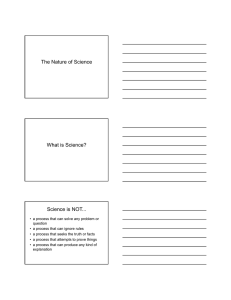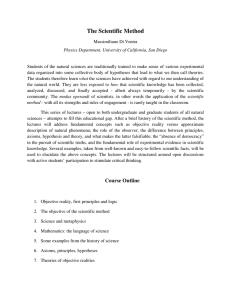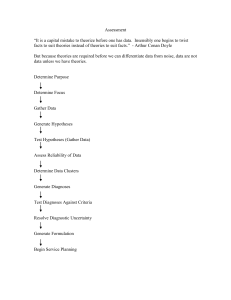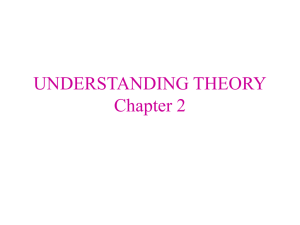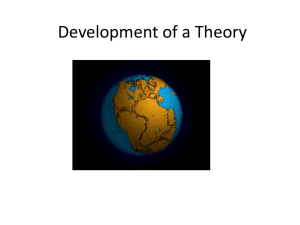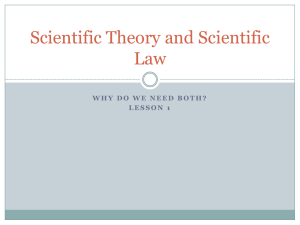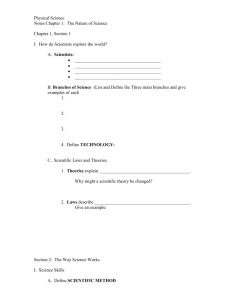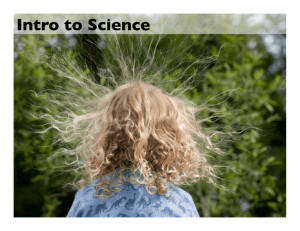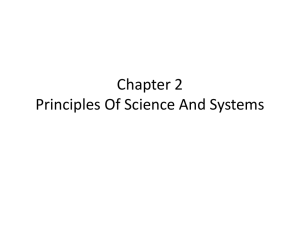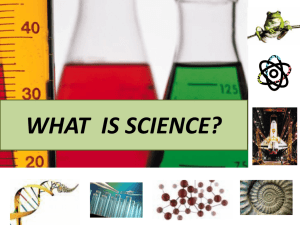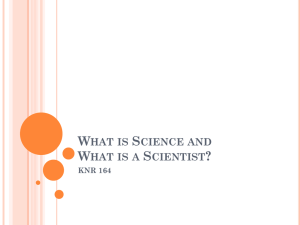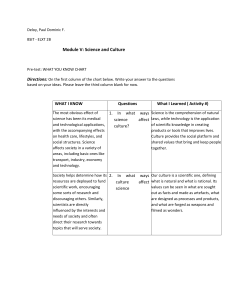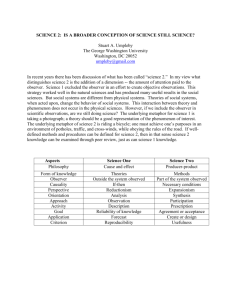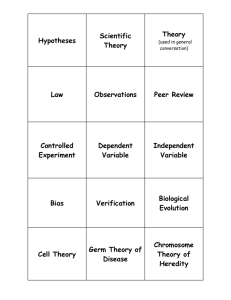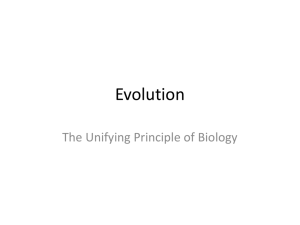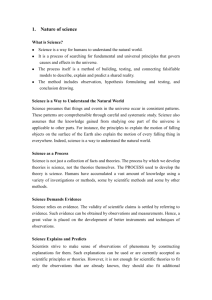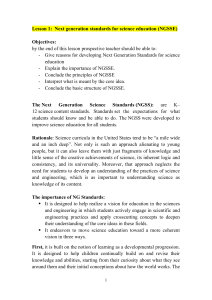Scientific Models Model – a pattern, plan, representation, or
advertisement
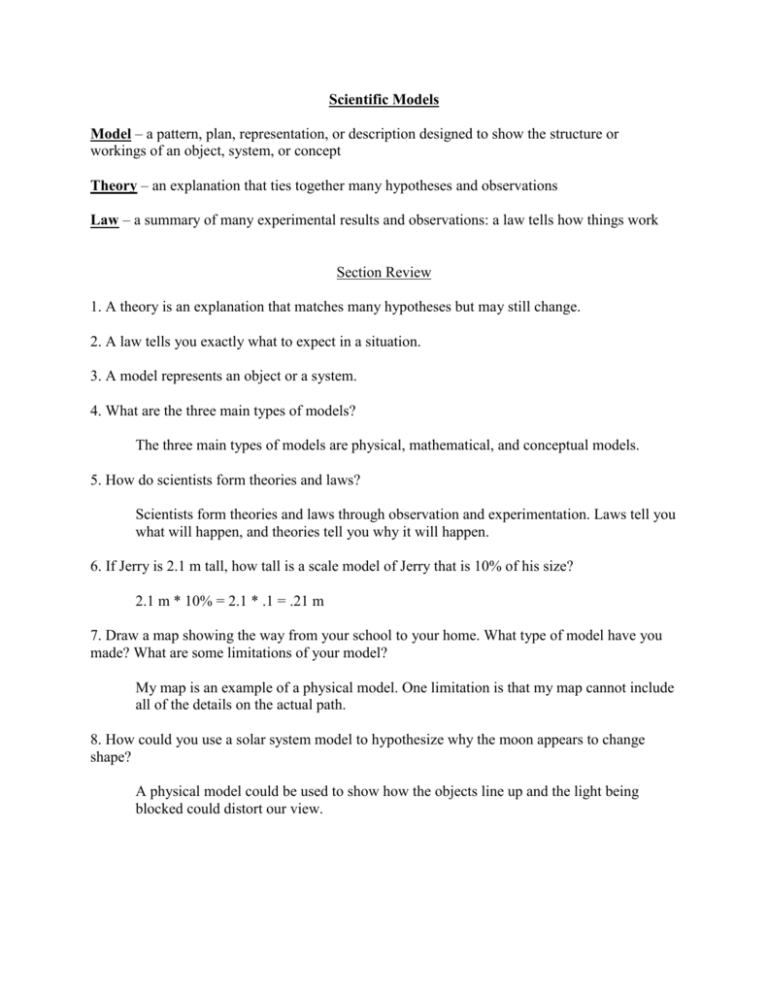
Scientific Models Model – a pattern, plan, representation, or description designed to show the structure or workings of an object, system, or concept Theory – an explanation that ties together many hypotheses and observations Law – a summary of many experimental results and observations: a law tells how things work Section Review 1. A theory is an explanation that matches many hypotheses but may still change. 2. A law tells you exactly what to expect in a situation. 3. A model represents an object or a system. 4. What are the three main types of models? The three main types of models are physical, mathematical, and conceptual models. 5. How do scientists form theories and laws? Scientists form theories and laws through observation and experimentation. Laws tell you what will happen, and theories tell you why it will happen. 6. If Jerry is 2.1 m tall, how tall is a scale model of Jerry that is 10% of his size? 2.1 m * 10% = 2.1 * .1 = .21 m 7. Draw a map showing the way from your school to your home. What type of model have you made? What are some limitations of your model? My map is an example of a physical model. One limitation is that my map cannot include all of the details on the actual path. 8. How could you use a solar system model to hypothesize why the moon appears to change shape? A physical model could be used to show how the objects line up and the light being blocked could distort our view.

